Let’s face it:
Based on our survey of Kenmore users, it’s a widespread problem.
Many of us dread the moment when our Kenmore washer won’t turn on, leaving us with a seemingly irreparable appliance destined for the storage room and considering the need for a replacement.
But here’s the truth:
Fixing a faulty Kenmore washer is often more affordable than buying a new one.
The reality is:
It might just be a minor issue that you can fix yourself.
That’s where this article comes in:
With expert advice from Mike Carlson, a quality appliance repairer from Bakersfield, CA, with 15 years of experience, I’ll guide you through identifying these problems and how to tackle them to get your washer up and running again.
Ready to dive in?
Table of Contents
5 Reasons Why Your Kenmore Washer Won’t Turn On
According to Kenmore users and Mike Carlson, a skilled appliance repairer from Bakersfield, there are several reasons your Kenmore washer might not turn on. Common culprits include burnt-out electrical outlets, damaged thermal or line fuses, and tripped circuit breakers. In some cases, a simple reset might be all your washer needs. Less frequently, a faulty power cord or control board could be causing the problem.
Keep reading as I delve into each reason separately, providing valuable insights and solutions to help you get your washer up and running again.
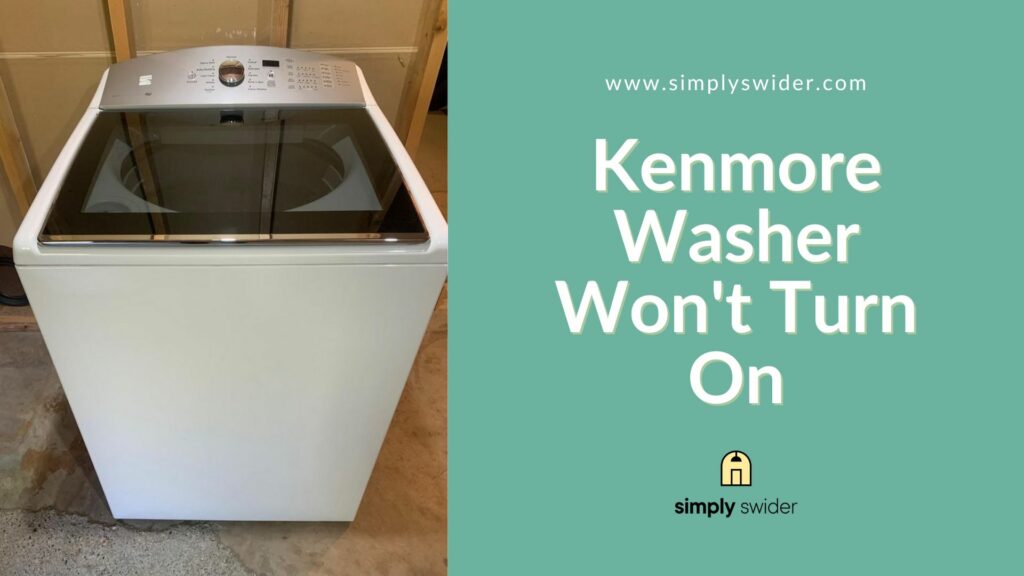
1. Inspect the Electrical Outlet
Pay attention:
Before jumping to conclusions that your Kenmore washer is faulty and needs to be replaced, consider this advice from Mike.
Hold on:
It’s possible that the issue lies with the electrical outlet, not the washer itself. The outlet may have developed a problem and isn’t receiving power.
Here’s what to do:
Check the electrical outlet by connecting another appliance to it. If the appliance doesn’t turn on, the outlet is likely the problem, often caused by loose or burned-out connections.
Don’t worry:
Replacing the electrical outlet is a straightforward DIY repair.
Safety first:
Use a circuit tester to ensure the outlet isn’t receiving any electrical power before proceeding.
- Step 1: Gather the necessary tools for the repair and turn off the power to the outlet at the main service panel.
- Step 2: Remove the screws holding the cover plate in place, then take off the plate.
- Step 3: Unscrew the mounting screws holding the outlet in the wall box.
- Step 4: Disconnect the wires from the outlet. If it’s an older outlet with a back-wire connection, use a flat-head screwdriver to remove the wires.
- Step 5: Install the new outlet by reattaching the wires. Use pliers to secure the wires around the screw, then tighten the screws to keep the wires in place.
- Step 6: Secure the new outlet with the mounting screws you removed earlier, and screw the cover plate back in.
- Step 7: Turn your power back on and test the new electrical outlet to see if it’s receiving power.
Pro Tip:
Make sure the new outlet can supply the appropriate current for your Kenmore washer to prevent frequent burnouts.
And there you have it!
2. Replace Defective Power Cord
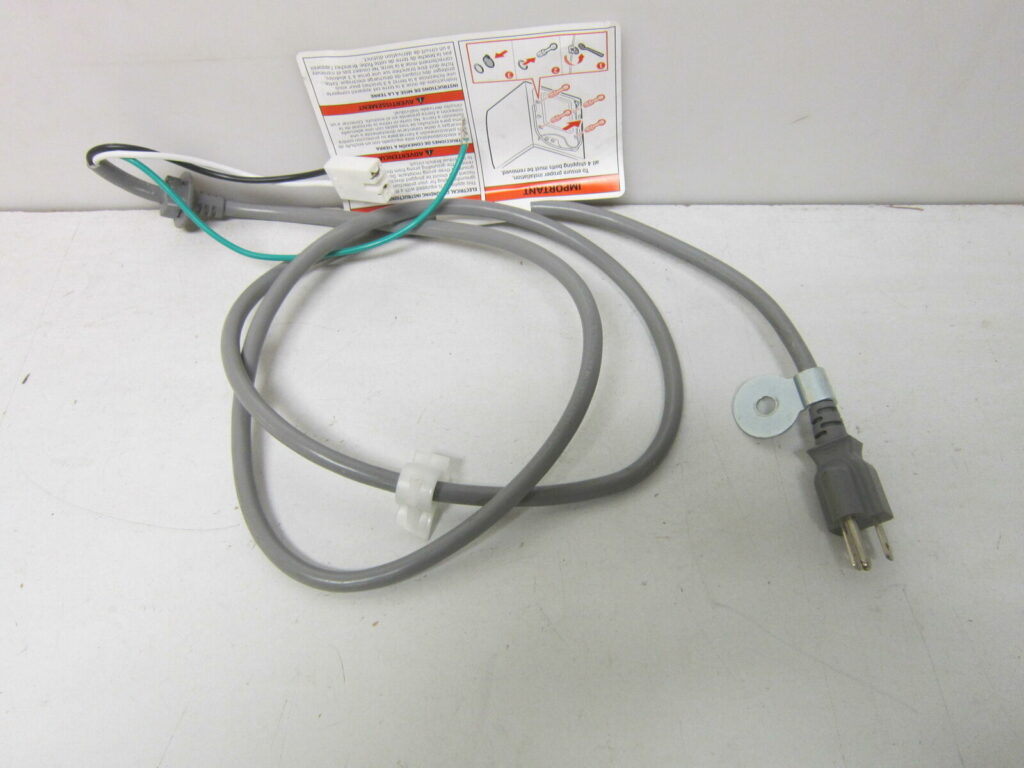
Consider this:
If the electrical outlet is working but your washer still won’t start, Mike Carlson, a quality appliance repairer, suggests that the power cord could be defective and in need of replacement.
Keep in mind:
Power cord issues are relatively uncommon. To confirm that the power cord is faulty, use a digital multimeter to test for continuity. If there’s no continuity, it’s time to replace the cord.
Don’t worry:
This is a simple repair, and you can follow the steps below to get it done.
- Step 1: Disconnect your Kenmore washer from the power source.
- Step 2: Remove the caps of the control panel at both ends and take out the screws holding the control panel in place using a Phillips head screwdriver.
- Step 3: Lift the control panel, detach the power cord wire connector, and release the retaining wires by depressing the tab to remove the old cord.
- Step 4: Install the new power cord by inserting the wire connector through the rear panel and snapping the retaining cord back in place.
- Step 5: Reconnect the wire connectors, lower the control panel, and screw it back in place. Don’t forget to replace the control panel caps at both ends.
- Step 6: Plug in your Kenmore washer, and you’re all set!
3. Replace a Faulty Timer
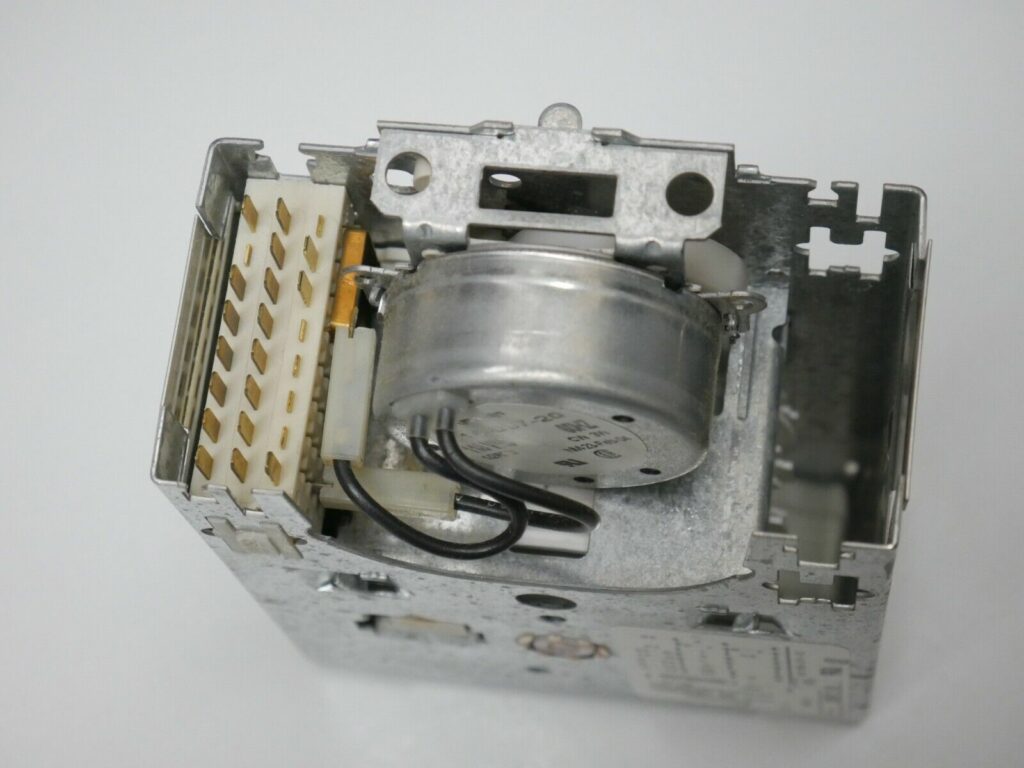
Here’s the deal:
Mike Carlson, an appliance repair expert, reminds us that the timer acts as the brain of your Kenmore washer, controlling all its functions.
“Kenmore timer typically costs between $100 to $300, depending on the model. If you choose to repair it yourself, you can save around $112 to $200 on repair technician fees.”, he added.
What’s the catch?
If your washer’s timer is faulty, it can affect every component and even prevent your washer from turning on.
As Mike said:
Timers can be expensive to replace, so confirm it’s the issue before proceeding.
To do this:
Test the timer for continuity using a multimeter. If there’s no continuity, the timer is faulty and needs replacement.
Moreover:
If your washer’s timer is covered in soot from carbon buildup, consider replacing it instead of cleaning the soot off.
Why?
Cleaning the timer is technical and time-consuming, and timers with previous soot buildup are prone to developing faults later.
Fortunately:
These steps will guide you through replacing the timer in your Kenmore washer quickly.
Ready?
- Step 1: Unplug your washer and gather the necessary tools for the repair.
- Step 2: Remove the control panel caps by pulling them off.
- Step 3: Unscrew the control panel.
- Step 4: Rotate the timer dial knob counterclockwise to remove the dial.
- Step 5: Take out the mounting screws securing the timer.
- Step 6: Carefully lift the control panel.
- Step 7: Press the retaining tab to detach the old timer from the wire connectors.
- Step 8: Connect the wires to the new timer and position it on the control panel.
- Step 9: Reattach the mounting screws, tightening them securely.
- Step 10: Lower the control panel and screw it back in place.
- Step 11: Replace the timer knob, tightening it by turning it clockwise.
- Step 12: Snap the control panel caps back in place at both ends.
- Step 13: Plug in your Kenmore washer.
That’s all there is to it!
4. Reset Tripped Circuit Breaker
According to Mike Carlson, if your washer tripped the outlet’s circuit breaker, your Kenmore washer would not turn on.
Here’s the deal:
A circuit will trip or shut off if it senses an excessive amount of energy or current flowing into it. This protects your Kenmore washer from overheating or receiving too much power, preventing damage.
So, what should you do?
Locate your circuit breaker and check to see if your washer’s circuit has been tripped. If it has, flip the switch to reset the circuit. You can tell that a circuit has been tripped if the handle is in the mid-position.
Keep in mind:
When some circuit breakers trip, the handle moves to the off position instead. Consult your owner’s guide for information on your specific model.
The good news:
You can reset the circuit yourself, especially if an overload caused the trip. However, working with a circuit breaker panel can be dangerous, so always observe safety protocols.
- Step 1: Gather all the necessary equipment for the task, such as a flashlight, safety goggles, work gloves, and wear rubber-soled shoes.
- Step 2: Turn off all devices on the circuit breaker, including your washer, that might have caused the trip.
- Step 3: Access the service panel by sliding the plastic switch and opening the door. Locate your washer’s circuit, turn it off, and then turn it back on.
At this point:
Your washer should be functioning again.
Easy, right?
Pro tip:
To avoid causing another trip on the circuit, connect the appliances one at a time or move your washer to a circuit breaker with less power draw. Remove other appliances connected to your washer’s circuit breaker if necessary.
Note:
If the problem persists or the circuit trips too often, call a professional electrician for assistance. Alternatively, contact Kenmore Customer Support for guidance.
5. Replace Damaged Main Control Board
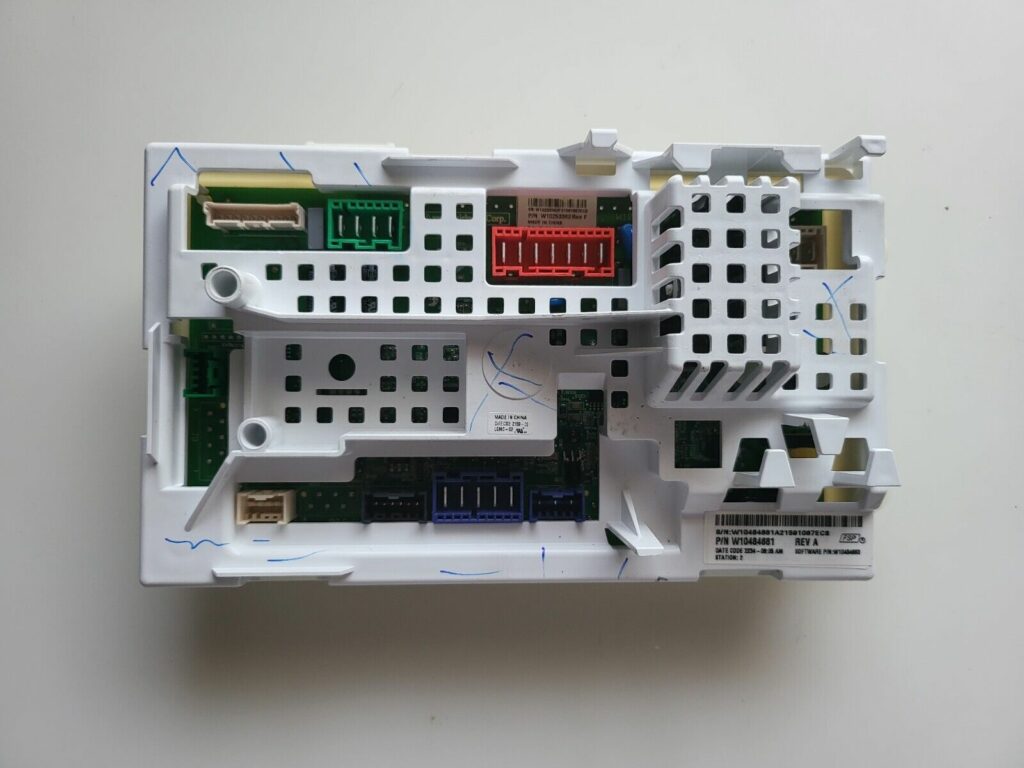
As Mike Carlson explains, the control board acts like the timer in your washer, ensuring the smooth operation of all your Kenmore washer’s components.
Here’s the deal:
If the control board is faulty, it’s possible that your washer won’t turn on.
However, keep in mind:
Control board issues are rare, so before replacing it, check for more common faults.
Thankfully:
You can test your Kenmore washer’s control board for continuity using a digital multimeter. If there’s no continuity or if it provides a false reading, the main control board is faulty and needs to be replaced.
Keep in mind that the price of a control board is typically in the range of $100 to $200, depending on your washer model.
In this situation:
If you’re faced with this issue, heed the advice of an appliance technician like Mike Carlson:
Don’t attempt to replace the main control board by yourself. Instead, contact Kenmore Customer Support or a qualified professional for assistance with this repair.
Most Affected Models
Fact:
Kenmore washers rarely fail to turn on, and more often than not, the problem is not with the washer.
Nevertheless:
These are some models that would most likely stop turning on:
1. Kenmore Front Load
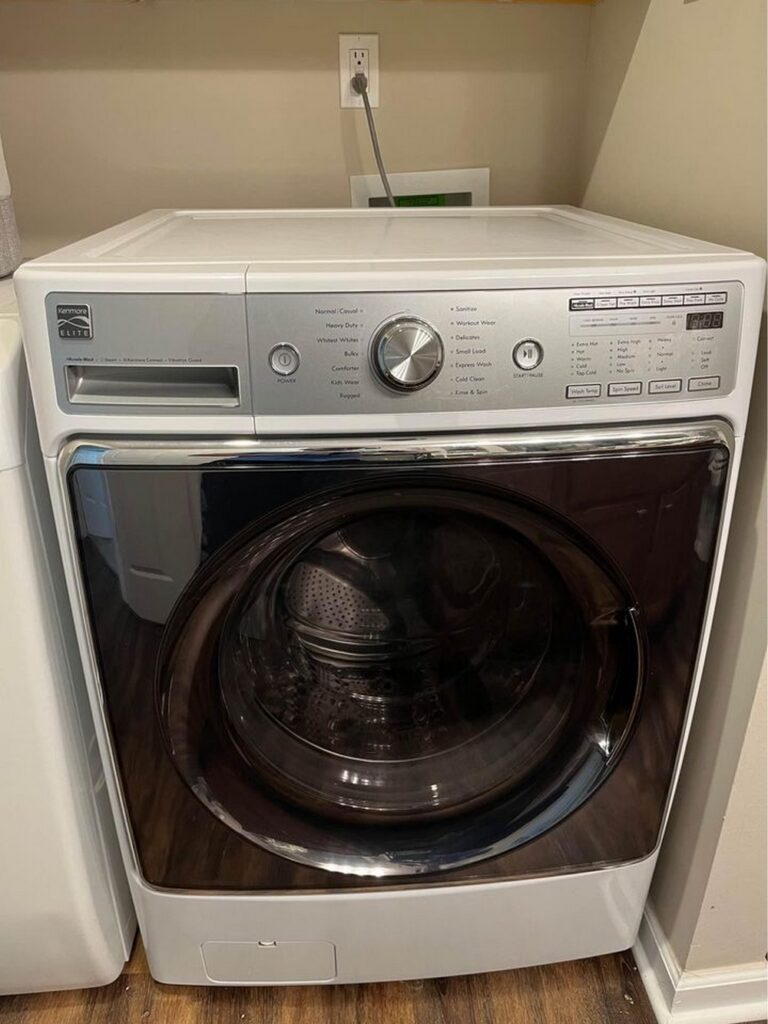
Usually:
The Kenmore front load washer is very easy to use, and is energy efficient. They also clean clothes better than top-load washers.
In addition:
They have sensors that help you calculate your load size and how rigorous or light your wash will be.
Sadly:
The Kenmore front load washer occasionally refuses to start, usually due to a faulty timer.
2. Kenmore Top Load
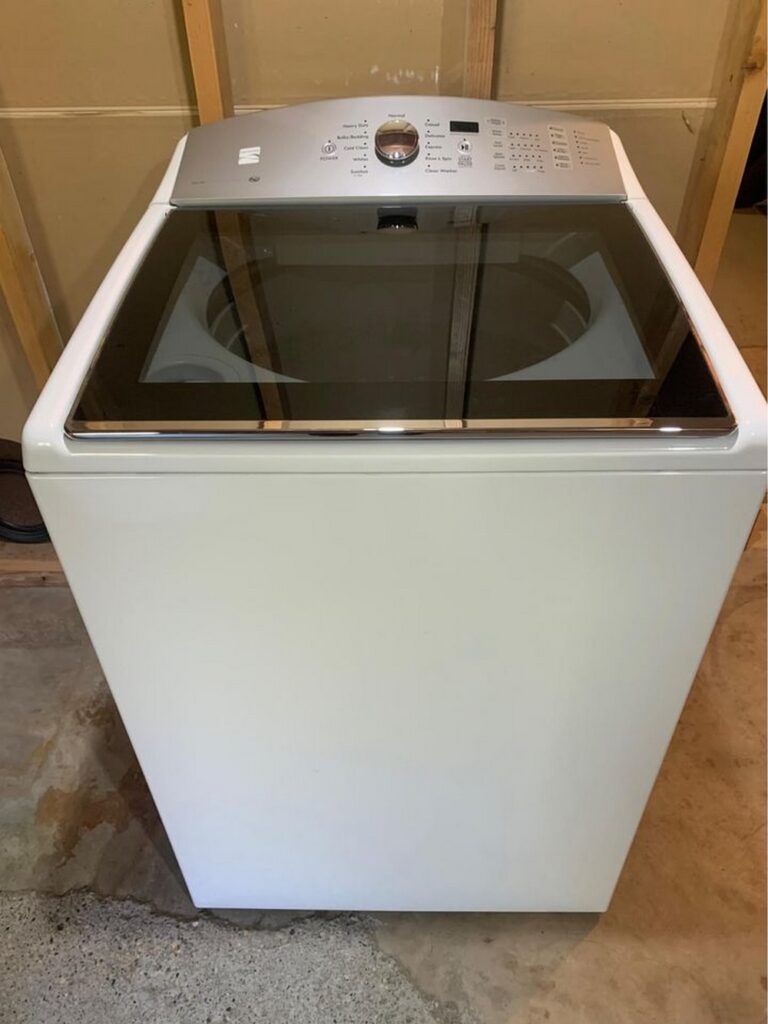
Typically:
The Kenmore top load washers have a longer life cycle than their front load counterparts. They are usually not prone to the risk of molds or bad odor since water evaporates out of the washer easily.
However:
The Kenmore top loaders have longer wash cycles compared to other Kenmore washer models.
3. Kenmore Model 796
Get this:
The Kenmore 796 model has a large capacity which enables you to wash large loads in one wash cycle.
However:
The most common reason for this particular model not turning on is a tripped circuit breaker caused by more than one appliance attached to it.
4. Kenmore 110 Series
Fact:
The Kenmore 110 Series is portable and can be connected to practically any faucet with the provided adaptor. They have very powerful motors and up to four wash cycles with different temperature and load combinations.
Sadly:
These models are vulnerable to a variety of faults that could lead them to stop working, which could be a tripped circuit breaker or a faulty electrical outlet. In very rare cases, the power cord could also be responsible.
Conclusion:
Let’s face it:
Every appliance is bound to experience issues over time. However, relegating your Kenmore washer to the storage room simply because it won’t turn on isn’t the best approach.
So, what’s the solution?
When your Kenmore washer refuses to turn on, follow these troubleshooting tips and draw on the expertise of Mike Carlson, a seasoned appliance repairer:
- Replace a faulty or burnt-out electrical outlet
- Reset the circuit breaker and be mindful of connecting only a few appliances at once
- Consult a professional technician, like Mike Carlson, to help replace your washer’s main control board
Moreover:
Consider performing a master reset on your Kenmore washer or using a multimeter to check the power cable for potential replacement needs.
Don’t hesitate to contact Kenmore Customer Support for further assistance with repairs.
Finally:
I’d love to hear from you! Share your experiences with these tips, let us know if they worked for you, and feel free to suggest any additional tricks you’ve discovered.
Please leave your comments and suggestions in the comment box below!
Frequently Asked Questions
The first thing you need to do is check if the outlet that your Kenmore washer is plugged into is receiving power. If the electricity is getting power, but your washer isn’t turning on, the problem may be with the main control board, the timer, or the circuit board to which your washer is connected. In rare circumstances, your Kenmore washer power cord may also be defective.
You can reset your washer by pressing the control button twice on the control panel, then the power button. After that, you should select a wash cycle and a wash option before finally pressing the start button to complete the whole process.
Alternatively, you can disconnect your Kenmore washer from its power source and wait for at least 3-5 minutes before reconnecting it and turning your washer back on.
The average lifecycle of a Kenmore washer is usually 10-13 years. Generally speaking, top load washers last longer than front load washers. It is possible for your Kenmore washer to last longer than 13 years.
A damaged fuse will be black in color, and you have to replace it. You should also inspect and remedy the issue that caused the fuse to blow.
Yes. Most of the time, the reason your Kenmore washer isn’t turning on is not due to a problem with the washer. And in the situations that it is, the fixes are very easy, and you can do them yourself or contact Kenmore Customer Support for further assistance.

